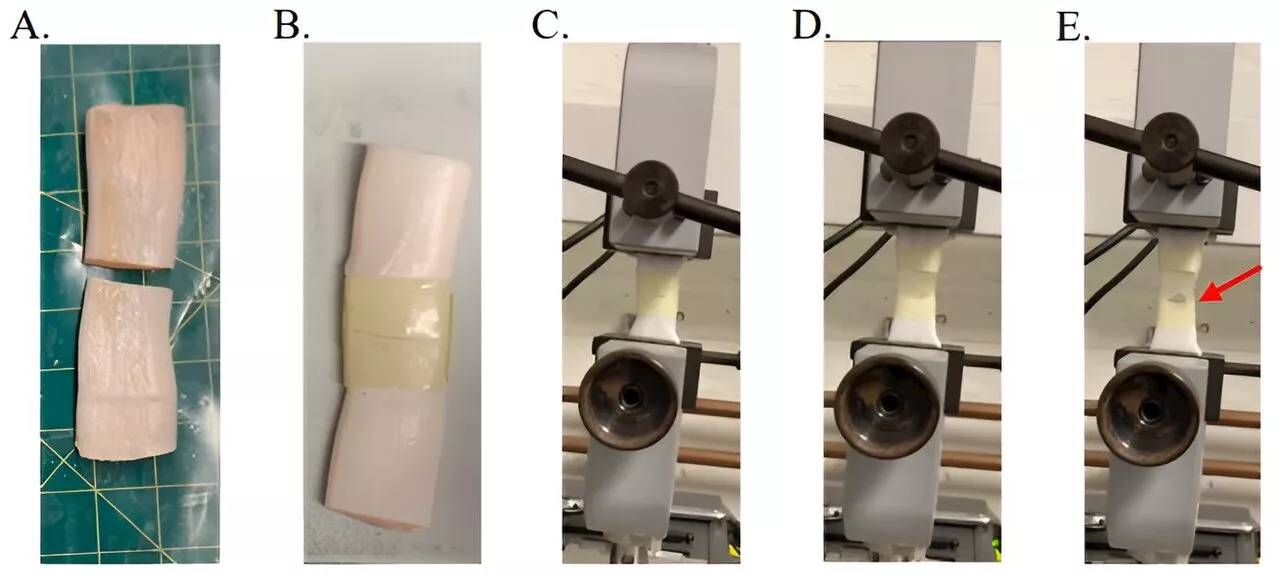Modern integrated microelectronic devices are often poorly repairable and difficult to recycle. Debondable adhesives play a key role in the transition to a circular economy with sustainable resources, less waste, and intelligent repair/recycling strategies.
A research team has now introduced a method for making adhesives that can be deactivated 'on command'.
Their inspiration came from the masters of underwater adhesion: mussels. Mussel-inspired adhesives have been developed before. These new versions are based on thiol-catechol polyaddition, which forms polymers with adhesive thiol-catechol connectivities . The trick is that when the catechol groups in the adhesive polymers are oxidized to quinones , the strength of adhesion decreases dramatically.
Biobased, peptidic biscatechol precursors of DiDOPA, which is similarly found in mussels, were compared with their fossil-based analog. Both adhesives also function under water and are insensitive to atmospheric oxygen and weak oxidizing agents. However, they lose their stickiness through oxidation with the strongly oxidizing sodium periodate of the fossil-based adhesive lies in the compensation, as hydrophobic polymers are also very good adhesives.
A new commentary paper puts forth a transformative solution to the unsustainable reliance on fossil resources by the chemical industry: catalysis to leverage sustainable waste resources, ushering the ...
Chemistry Organic Chemistry Inorganic Chemistry Materials Science Biochemistry Batteries Physics
United States Latest News, United States Headlines
Similar News:You can also read news stories similar to this one that we have collected from other news sources.
 Bioengineers develop a new environmentally friendly adhesive polymerA team of bioengineers at the University of California, Berkeley, has developed a new kind of environmentally friendly adhesive polymer. In their study, published in the journal Science, the group used an electrophilic stabilizer to prevent a certain fatty acid from depolymerizing, thereby enabling its use as an adhesive.
Bioengineers develop a new environmentally friendly adhesive polymerA team of bioengineers at the University of California, Berkeley, has developed a new kind of environmentally friendly adhesive polymer. In their study, published in the journal Science, the group used an electrophilic stabilizer to prevent a certain fatty acid from depolymerizing, thereby enabling its use as an adhesive.
Read more »
 AI can speed up drug development | ScienceDailyArtificial intelligence (AI) can help identify molecules that could serve as new drugs for mental health disorders. AI can be used to predict the three-dimensional structures of important receptors and thereby speed up the development of potential drugs.
AI can speed up drug development | ScienceDailyArtificial intelligence (AI) can help identify molecules that could serve as new drugs for mental health disorders. AI can be used to predict the three-dimensional structures of important receptors and thereby speed up the development of potential drugs.
Read more »
 Unlocking the last lanthanide | ScienceDailyA team of scientists was recently able to observe how promethium forms chemical bonds when placed in an aqueous solution.
Unlocking the last lanthanide | ScienceDailyA team of scientists was recently able to observe how promethium forms chemical bonds when placed in an aqueous solution.
Read more »
 AI approach to drought zoning | ScienceDailyA recent study shows that climate change may cause many areas in Canada to experience significant droughts by the end of the century. In response, the researchers have introduced an advanced AI-based method to map drought-prone regions.
AI approach to drought zoning | ScienceDailyA recent study shows that climate change may cause many areas in Canada to experience significant droughts by the end of the century. In response, the researchers have introduced an advanced AI-based method to map drought-prone regions.
Read more »
 Benefits and downside of fasting | ScienceDailyResearchers identified a signaling pathway in mice that boosts intestinal stem cells' regeneration abilities after fasting. When cancerous mutations occurred during this regenerative period, mice were more likely to develop early-stage intestinal tumors.
Benefits and downside of fasting | ScienceDailyResearchers identified a signaling pathway in mice that boosts intestinal stem cells' regeneration abilities after fasting. When cancerous mutations occurred during this regenerative period, mice were more likely to develop early-stage intestinal tumors.
Read more »
 Life after (feigned) death | ScienceDailyA new study has revealed what animals do after they have feigned death in order to avoid being killed by a predator and what the context of this behavior is.
Life after (feigned) death | ScienceDailyA new study has revealed what animals do after they have feigned death in order to avoid being killed by a predator and what the context of this behavior is.
Read more »
